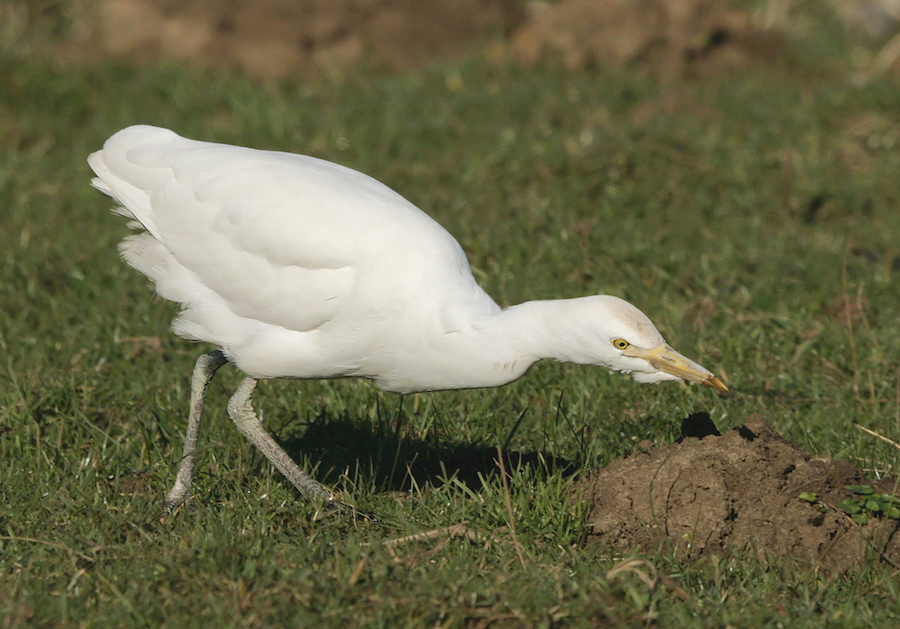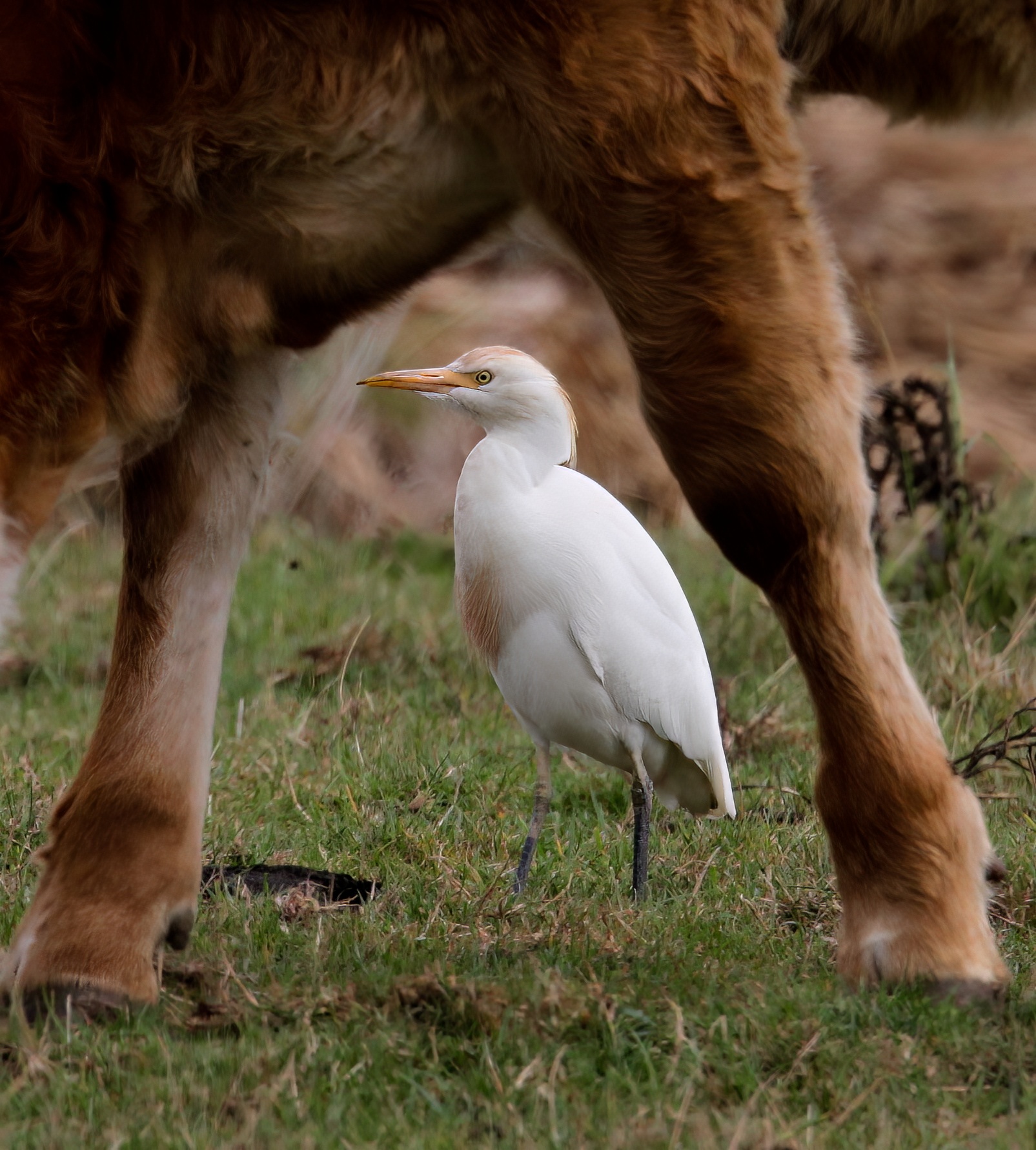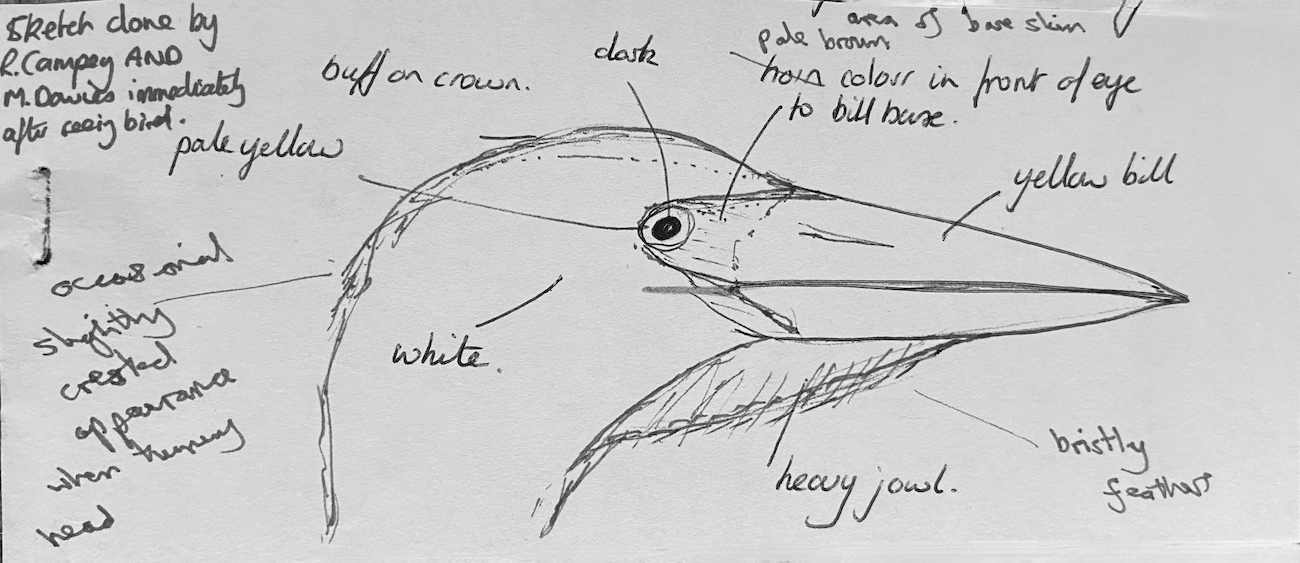Cattle Egret Bubulcus ibis


They became ex-BBRC in 2009 and a huge influx into Britain in winter 2007/2008 saw 160 records in 2008 and led to the first successful pair breeding, in Somerset. A similarly huge influx occurred in 2016/17 with nearly 200 in Britain, with 84 in Cornwall alone in March 2017. The colonisation of Britain has seemingly begun and in 2019 they bred in three counties for the first time – Essex, Hampshire and Northamptonshire. Given their record of expansionism across the globe, it has seemed to be only be a matter of time before they would be found breeding in Lincolnshire, and indeed in 2022 a pair were found breeding in a Little Egret colony in the north of the county - more details to follow. They were an LBRC species up to 2021.
Finder’s report: Cattle Egret at North Hykeham, October 13th, 1986, first county record.
by R. J. Campey and M. Davies.
Note: account taken from the original BBRC submission. There were nine records in 1986, the previous best year being 1981 with six, prompting BBRC to note that as the species spreads in Europe, records might be expected to increase here. A reasonable notion given the species status up to 2023!
Circumstances
Mrs S. Shucksmith (SS) telephoned the RSPB Regional Office at approximately 11.00hr., October 13th, 1986. She said that her son had been out fishing the previous evening and had seen a strange bird. Looking it up in the field guides he thought it was a Cattle Egret. SS went out in the morning (13th) and located the bird. She telephoned us to say she had seen what she thought was a Cattle Egret. It was all white with a yellow bill and dark legs and was feeding among some cattle, could we pop out and confirm the identification for her. At 12.30pm MD and myself (RJC) arrived at the Witham bank where the bird had been last seen. We relocated it and were able to confirm its identification as a Cattle Egret.
It was feeding continually taking flies from the sides and backs of the cows (cows were lying down) as well as feeding off insects from cow pats. On numerous occasions it waggled its neck from side to side when feeding. We left at approximately 1.45pm and the bird was still in the same area when other observers relocated it in the late afternoon and until 6pm. The bird was present in this area until October 25th and was seen by many other observers.
Description
The bird was immediately identifiable as a Cattle Egret being about half the size of a Grey Heron, having all white plumage, with a longish yellow bill. The legs were yellow-green although much of them was covered in mud. The crown was tinged warm buff but tis was only really noticeable when the bird stooped to feed against a dark background. The sides of the cheek and back of the nape were white as was all the other plumage. The throat feathers were slightly elongated. The mandibles were yellow, and the bird had a heavy, jowled appearance. From the base of the bill to the eye was a pale horn colour which extended around the front of the eye.

Cattle Egret: copy of the original sketch by R. J. Campey showing details of the head.
Reference
Rogers, M., J., and the Rarities Committee, with comments by S. J. Gantlett. Report on rare birds in Great Britain in 1982. British Birds 80 (11): 516-571.
(Updated with reference to the new Birds of Lincolnshire (2021) November 2022)
